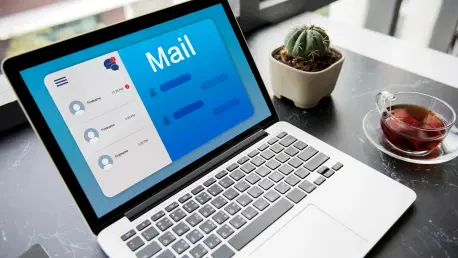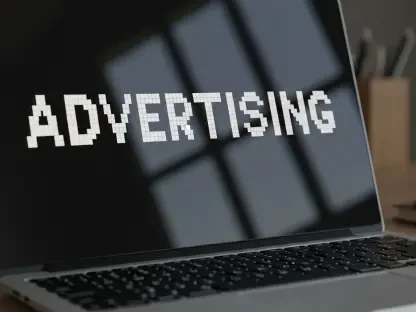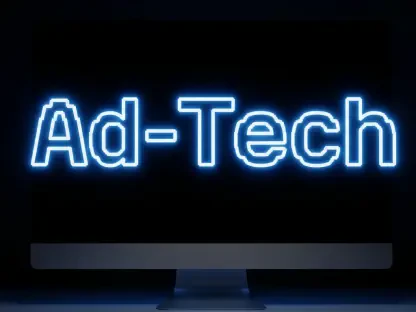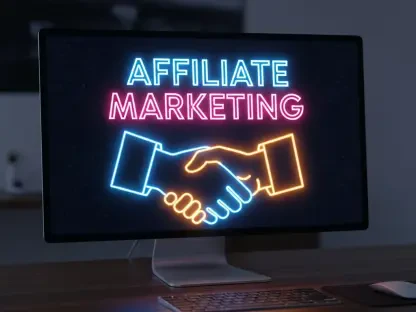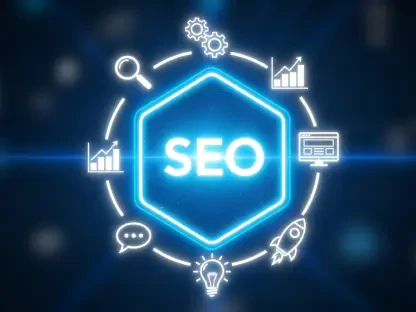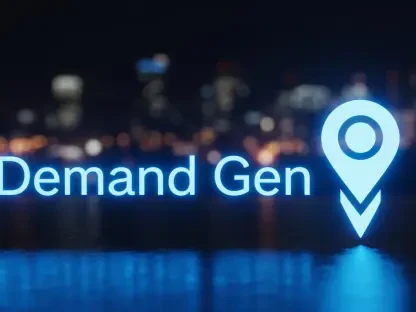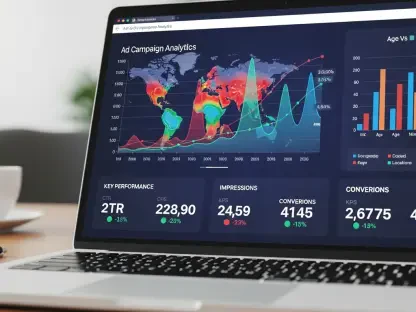Imagine a scenario where a single email could unlock a partnership with a key decision-maker, shaping the trajectory of a brand or product in profound ways. Vice Presidents (VPs) of Marketing hold the reins of brand strategy and revenue growth, yet their inboxes are battlegrounds of endless pitches and irrelevant noise. Standing out to these influential leaders is a formidable challenge, but it’s also an opportunity to make a lasting impact. This guide aims to equip professionals with a proven, data-driven approach to crafting strategic emails that capture the attention of marketing executives and foster meaningful connections.
The purpose of this playbook is to demystify the art of email outreach to VPs of Marketing by providing actionable steps grounded in extensive analysis of hundreds of thousands of interactions with these leaders. With their packed schedules and high-stakes roles, marketing executives are notoriously difficult to engage. However, mastering the nuances of timing, messaging, and campaign design can transform a simple email into a powerful tool for building relationships. This guide offers a clear path to cutting through the clutter and positioning outreach as a valuable contribution rather than just another pitch.
Understanding the stakes involved is critical for anyone aiming to connect with top marketing professionals. These leaders are not just gatekeepers but architects of demand and growth, often juggling multiple priorities under intense pressure. A poorly timed or generic message risks being ignored or deleted, while a well-crafted email can open doors to collaboration. This resource provides the framework to navigate their communication landscape effectively, ensuring every interaction counts toward establishing trust and relevance.
Unveiling the Power of Strategic Email Outreach to Marketing Leaders
VPs of Marketing play a pivotal role in shaping a company’s public image and driving its financial success, often acting as the strategic mind behind campaigns that resonate with millions. Their influence makes them prime targets for outreach, yet the sheer volume of emails they receive daily creates a barrier to meaningful engagement. Breaking through this barrier requires more than persistence; it demands a calculated approach that respects their time and priorities.
Strategic email outreach offers a unique opportunity to stand out by delivering value at the right moment. Data-driven insights reveal that factors such as send timing, personalized content, and actionable messaging significantly increase the likelihood of a response. These elements form the foundation of a successful campaign, turning a routine email into a conversation starter with high-impact potential.
This playbook dives deep into the essentials of winning over marketing leaders, covering optimal timing windows, tailored content strategies, and proven campaign structures. By focusing on these key areas, professionals can elevate their outreach from mere noise to a compelling proposition. The following sections provide a detailed roadmap to mastering this craft, ensuring every email sent is a step toward building a lasting connection.
Why Timing and Relevance Matter in Reaching Marketing Executives
Marketing executives operate in a fast-paced environment where every decision carries significant weight for their organization. Analysis of hundreds of thousands of interactions shows that these leaders are bombarded with pitches, making it essential to align outreach with their habits and availability. Timing an email correctly can mean the difference between being noticed and being overlooked in a crowded inbox.
Their schedules often revolve around strategic planning, team coordination, and performance reviews, leaving little room for unsolicited communications. The high stakes of their role amplify the need for relevance in any message directed their way. A generic or ill-timed email is likely to be dismissed, while a targeted approach that addresses current challenges or opportunities can spark genuine interest.
Empirical data underscores the necessity of understanding these behavioral patterns to achieve success. For instance, knowing when VPs are most likely to check their inboxes or engage with new ideas provides a critical edge. This section lays the groundwork for why precision in timing and content is not just beneficial but indispensable for forging connections with marketing decision-makers.
Crafting Your Email Strategy: Step-by-Step Tactics for Success
Step 1: Nail the Perfect Send Time for Maximum Visibility
Timing an email to a VP of Marketing is a science backed by hard data on engagement patterns. Scheduling messages during peak visibility windows increases the odds of capturing attention amidst their busy days. This step focuses on leveraging precise insights to ensure emails land when recipients are most receptive.
Early Weekday Mornings Are Your Golden Window
Data highlights early weekday mornings as the prime time for outreach, with Tuesday at 1 a.m. showing an adjusted open rate of 19.99%. Monday at 6 a.m. follows closely with a rate of 19.89%, making these slots ideal for maximizing visibility. Sending during these hours aligns with the start of their workday or late-night planning sessions.
Late-Night Weekend Surges for Unexpected Wins
Unexpectedly, late-night weekend sends, such as Friday at midnight, outperform many midday weekday attempts. These off-peak hours can catch marketing leaders during quieter moments when they’re catching up on correspondence. Capitalizing on such windows can provide a surprising advantage over more conventional timing.
Avoid the Friday Afternoon Dead Zone
Friday afternoons stand out as the least effective time to send emails, with open rates dropping by up to 42%. This period often coincides with wrapping up the week or preparing for weekend priorities, leaving little attention for new messages. Steering clear of this dead zone prevents outreach from being buried under end-of-week fatigue.
Step 2: Identify the Best Days for Deeper Engagement
Beyond specific hours, the choice of day plays a significant role in how emails are received by marketing executives. Certain days consistently show higher engagement rates, reflecting patterns in their weekly rhythms. Pinpointing these days ensures outreach aligns with moments of peak receptivity.
Tuesday Takes the Lead
Tuesday emerges as the top day for engagement across various metrics, offering the strongest opportunity for meaningful interaction. This midweek point often finds VPs in a focused mindset, ready to tackle strategic communications. Prioritizing this day can significantly boost the chances of a response.
Monday and Friday Mornings as Strong Contenders
Monday and Friday mornings also present valuable windows for engagement, serving as strong secondary options. Mondays catch leaders as they set the tone for the week, while Friday mornings benefit from a push to finalize tasks. Scheduling during these periods taps into their proactive energy before the day’s demands take over.
Step 3: Design High-Impact Email Campaigns with Precision
Crafting the content of an email campaign is just as critical as timing, with a focus on delivering immediate value to the recipient. High-impact campaigns are built on strategic messaging that resonates with the unique challenges faced by marketing leaders. This step outlines how to structure content for maximum effect.
Offer Timely Competitive Insights
Providing observations about a competitor’s recent moves can position an email as a must-read. Such insights offer actionable value, addressing the recipient’s need to stay ahead in a dynamic market. This approach demonstrates an understanding of their competitive landscape and sparks curiosity.
Tailor Positioning to Their Context
Referencing the recipient’s company or specific industry challenges shows that the message is not a generic pitch. Tailored positioning builds relevance, making the email feel like a direct response to their current situation. This customization is key to establishing credibility and interest.
Simplify with a Singular Call to Action
Clarity in communication is vital, so including a single, straightforward call to action avoids overwhelming the recipient. Whether it’s scheduling a brief call or reviewing a specific proposal, a focused ask simplifies the next step. This precision ensures the email’s purpose is unmistakable and easy to act upon.
Step 4: Use Proven Email Templates to Spark Interest
Structured templates can streamline the process of creating compelling emails that resonate with VPs of Marketing. These formats have been tested for effectiveness, offering a reliable starting point for outreach. This step provides two distinct approaches to frame messages for optimal impact.
Competitor Insight Introduction Template
This template begins with a concise observation about a competitor’s strategy, positioning the sender as a source of valuable intel. It offers a brief insight followed by an invitation to discuss further, creating an entry point for dialogue. Such a format leverages curiosity about market dynamics to drive engagement.
Marketing Strategy Collaboration Template
Alternatively, this template aligns the sender with the recipient’s broader goals for the current or upcoming year, proposing a quick conversation as a partnership opportunity. It emphasizes shared objectives and mutual benefit, framing the outreach as a collaborative effort. This approach builds a foundation for long-term connection.
Step 5: Dodge Common Pitfalls That Kill Engagement
Even the best-timed emails can fail if they fall into common traps that alienate busy executives. Avoiding these mistakes is essential to maintaining the integrity of an outreach campaign. This step highlights critical errors to sidestep for sustained success.
Don’t Send During Low-Engagement Windows
Scheduling emails during low-engagement times, such as Friday afternoons, risks them being ignored amid other priorities. These periods often see diminished attention, rendering messages ineffective. Staying mindful of data-driven timing insights prevents such missteps.
Skip Vague or Generic Subject Lines
Subject lines lacking specificity or context fail to grab attention in a crowded inbox. A generic title can signal irrelevance, prompting immediate dismissal. Crafting pointed, tailored subject lines ensures the email stands out as worth opening.
Avoid Multiple or Confusing Calls to Action
Including several requests or unclear next steps can confuse the recipient, diluting the message’s impact. A singular, well-defined action keeps the focus sharp and actionable. This clarity respects the recipient’s limited time and decision-making capacity.
Keep Content Skimmable and Concise
Long, dense paragraphs are a deterrent for busy professionals who need to process information quickly. Emails should be structured for easy skimming, with short sections and clear points. Brevity combined with strategic formatting enhances readability and retention.
Never Skimp on Personalization
Mass sends without tailoring are almost guaranteed to be disregarded as irrelevant by marketing leaders. Personalization demonstrates effort and understanding of their unique context. Failing to customize content undermines the entire outreach strategy and diminishes trust.
Key Takeaways for Winning Over VPs of Marketing
Distilling the core strategies into a concise format provides an easy reference for effective outreach to marketing executives. Timing remains paramount, with peak open rates observed on Tuesday at 1 a.m. and Monday at 6 a.m., while Friday afternoons should be avoided due to significantly lower engagement. Selecting the right day, particularly Tuesday, with Monday and Friday mornings as viable alternatives, further optimizes visibility.
Campaign design plays an equally vital role, emphasizing the delivery of competitive insights and tailored positioning to address specific recipient needs. A single, clear call to action ensures the message remains actionable without overwhelming the reader. Utilizing proven templates, such as those focused on competitor insights or strategic collaboration, enhances the likelihood of sparking interest.
Avoiding common pitfalls is critical to maintaining momentum in outreach efforts. Errors like sending during low-engagement windows, using vague subject lines, or neglecting personalization can derail even well-intentioned campaigns. By adhering to these principles, professionals can craft emails that not only reach VPs of Marketing but also resonate deeply with their priorities and challenges.
Applying Email Strategies in a Broader Marketing Landscape
The email tactics outlined in this guide fit into a larger trend of personalized, data-driven marketing that defines the current landscape. Understanding executive behavior across industries has become increasingly important as communication channels evolve. These strategies provide a blueprint that can be adapted to various contexts, ensuring relevance beyond just marketing leaders.
Challenges such as evolving inbox filters and shifting executive schedules pose potential hurdles to consistent success. Staying adaptable and monitoring engagement metrics allows for real-time adjustments to outreach approaches. The integration of AI-enhanced tools offers a promising avenue for refining timing and content, making campaigns even more precise in targeting recipient preferences.
Looking ahead, the focus on building trust through strategic communication aligns with broader goals of fostering long-term partnerships. Email outreach serves as an entry point to deeper relationships, where value-driven interactions lay the groundwork for sustained collaboration. As marketing continues to prioritize personalization, these principles remain a cornerstone for connecting with decision-makers across sectors.
Your Next Step to Mastering Marketing Executive Outreach
Reflecting on the journey through this playbook, the combination of strategic timing, personalized messaging, and data-backed insights proved instrumental in engaging VPs of Marketing. Each step, from pinpointing optimal send times to crafting high-impact campaigns, contributed to a cohesive strategy that transformed inbox noise into meaningful dialogue. The focus on avoiding common pitfalls ensured that efforts remained effective and respectful of the recipient’s time.
Moving forward, the actionable next step is to implement these tactics with precision, testing the provided templates in real-world scenarios. Tracking results and refining approaches based on response patterns becomes a critical follow-up to initial outreach. This iterative process promises to sharpen skills and adapt to the unique dynamics of each marketing leader’s communication style.
Beyond immediate application, exploring how these strategies could integrate with emerging tools and trends offers a path to sustained relevance. Experimenting with AI-driven analytics to predict engagement windows or incorporating multimedia elements into emails presents exciting possibilities. These considerations mark the beginning of a broader effort to not just connect with VPs of Marketing, but to build enduring partnerships that drive mutual success.
